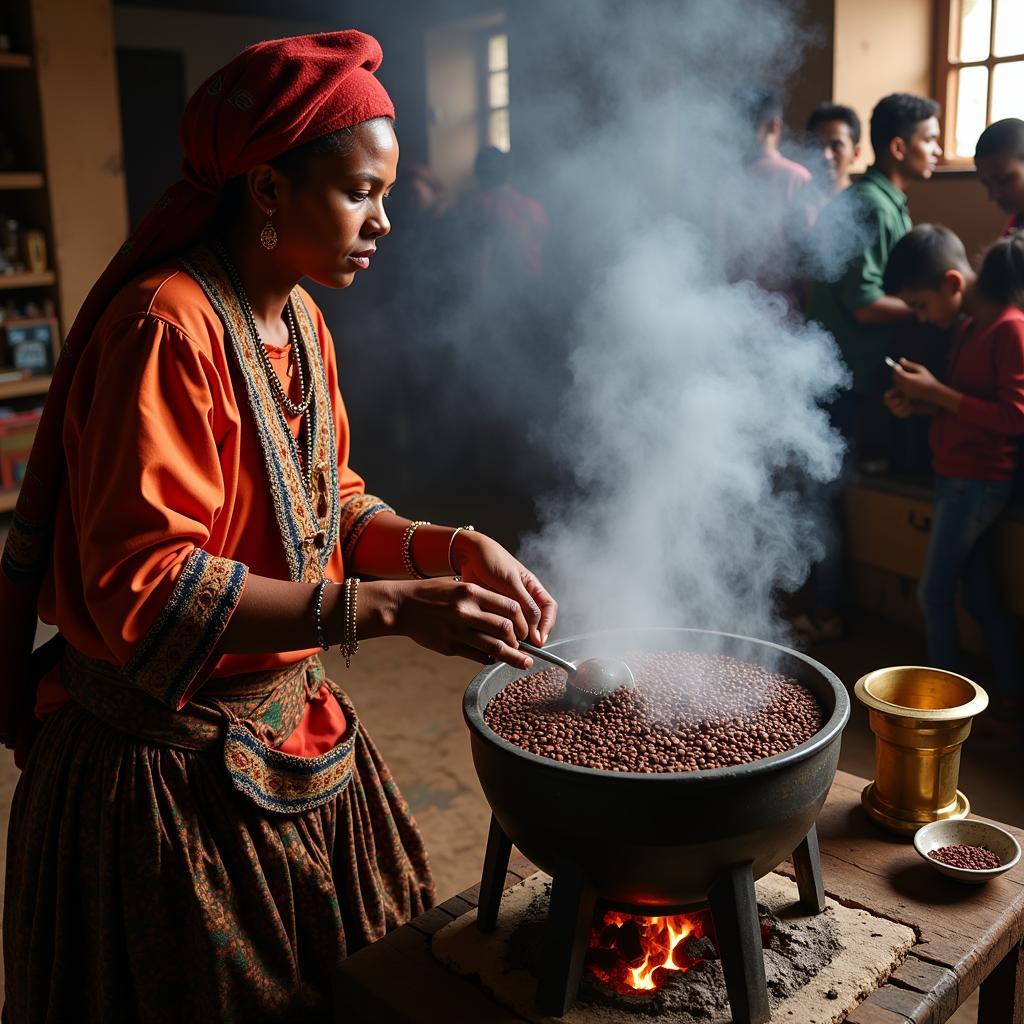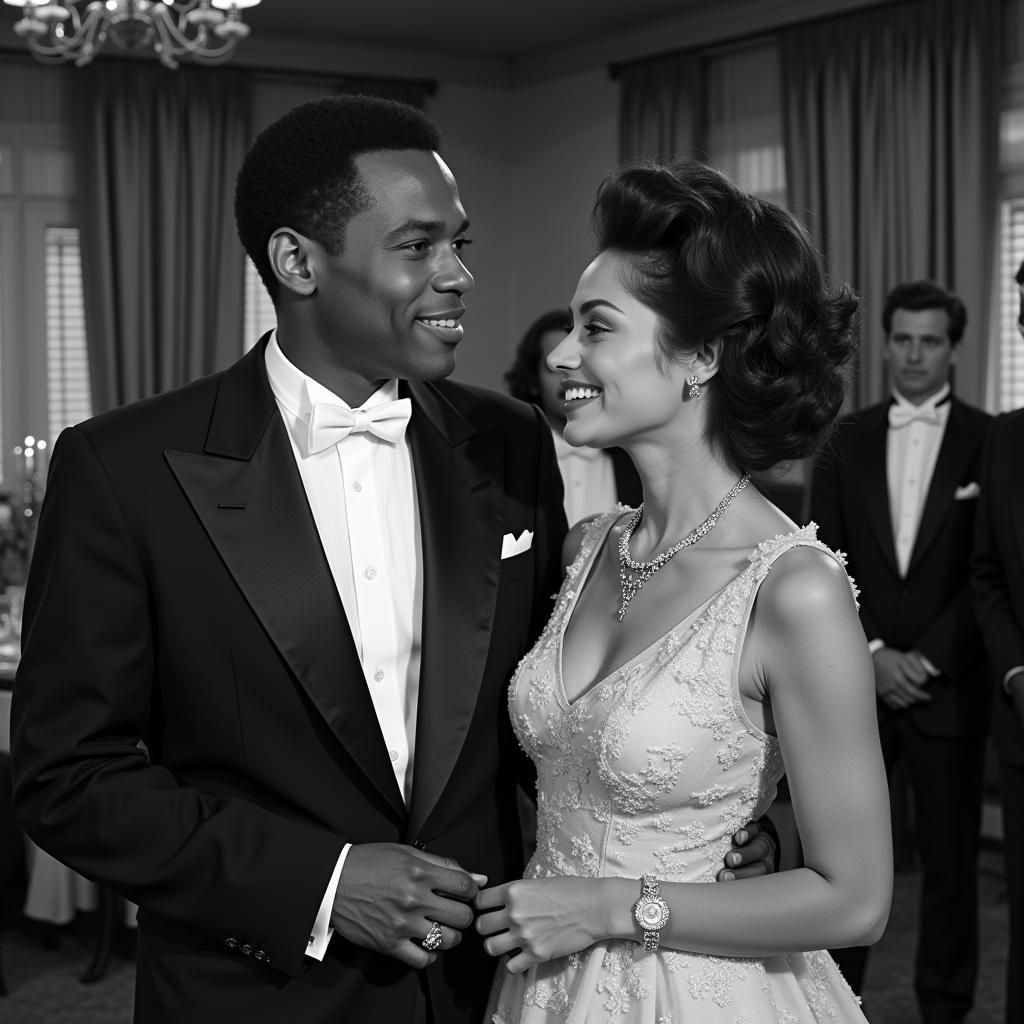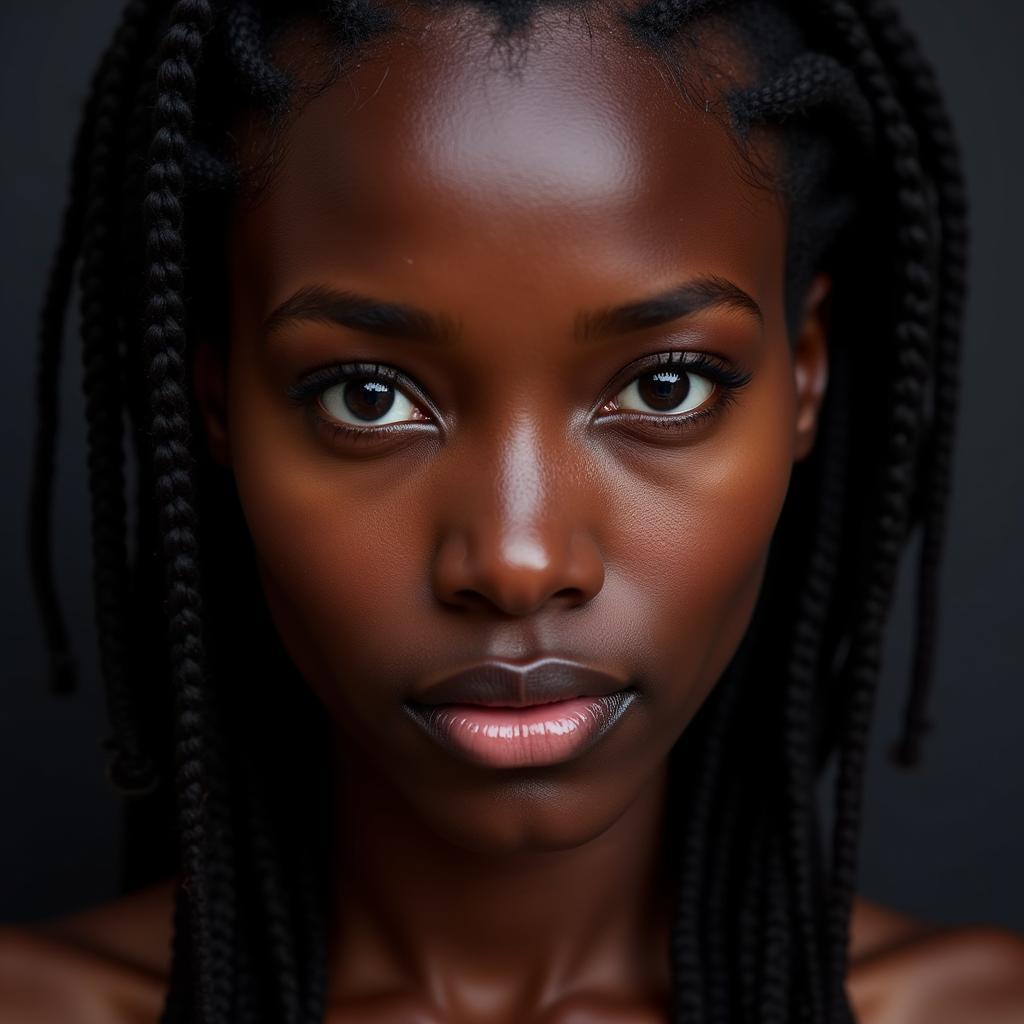South African Painting Artists: A Vibrant Legacy
South African Painting Artists offer a captivating window into the country’s complex history, diverse cultures, and resilient spirit. From the early rock art of the San people to the contemporary masters making waves on the global stage, South African art reflects a unique tapestry of influences, narratives, and styles. This article delves into the rich landscape of South African painting, exploring prominent artists, movements, and themes that have shaped its evolution.
A Historical Journey: From Ancient Roots to Colonial Encounters
The story of South African painting begins with the ancient rock art found across the region. The San people, among the oldest known inhabitants of Southern Africa, left behind a legacy of evocative paintings depicting animals, humans, and spiritual beliefs. These early works provide invaluable insights into their lives, rituals, and understanding of the natural world.
The arrival of European colonists in the 17th century brought about significant changes in the artistic landscape. European art traditions, particularly Western portraiture and landscape painting, began to influence local artists. However, indigenous art forms persisted, often incorporating colonial themes and materials in unique ways.
The Rise of South African Art Movements
The 20th century witnessed the emergence of distinct South African art movements that reflected the sociopolitical climate of the country. The early 1900s saw the rise of Impressionism and Expressionism, with artists like Irma Stern and Maggie Laubser embracing bold colors and expressive brushstrokes. Stern, particularly known for her vibrant portraits of indigenous people, became a leading figure in South African modern art.
The mid-20th century was marked by the devastating impact of apartheid, a system of racial segregation that deeply affected every aspect of life in South Africa. Artists responded to this oppressive regime in various ways. Some, like Gerard Sekoto, portrayed the harsh realities of apartheid in their work, documenting the struggles and resilience of black South Africans. Others, like Walter Battiss, explored abstract and surrealist forms, seeking alternative ways to express their creativity and dissent.
The 1970s saw the emergence of the Black Consciousness Movement, which had a profound influence on South African art. Artists like Dumile Feni and George Pemba used their work as a powerful tool for social commentary and protest, challenging the injustices of apartheid and celebrating black identity.
Post-Apartheid Art: A New Era of Freedom and Expression
The fall of apartheid in 1994 ushered in a new era of freedom and creativity in South Africa. Artists were finally free to express themselves without the constraints of censorship and oppression. This period witnessed a flourishing of diverse artistic styles and themes.
Contemporary South african art movements continue to grapple with the legacies of the past while exploring new frontiers in artmaking. Artists like William Kentridge, with his evocative charcoal drawings and animated films, and Zanele Muholi, known for their powerful photographic portraits challenging gender and LGBTQ+ representation, have gained international acclaim for their thought-provoking and technically masterful work.
Themes and Inspirations in South African Painting
Throughout its history, South African painting has been deeply intertwined with the country’s social, political, and cultural landscape. Some of the recurring themes and inspirations include:
- Identity and Belonging: Exploring themes of race, culture, and belonging in a diverse and often divided society.
- Social Justice and Resistance: Addressing issues of inequality, injustice, and the legacy of apartheid.
- Landscape and Nature: Celebrating the beauty and diversity of the South African landscape, from its vast plains to its rugged coastlines.
- Urban Life and Culture: Documenting the vibrancy and complexities of life in South Africa’s cities and townships.
- Spirituality and Ancestral Heritage: Drawing inspiration from indigenous beliefs, rituals, and mythology.
Where to Experience South African Painting
South Africa is home to a thriving art scene, with numerous galleries and museums showcasing the works of both established and emerging artists. Some of the key destinations for art lovers include:
- Zeitz Museum of Contemporary Art Africa (MOCAA), Cape Town: Housing the largest collection of contemporary African art in the world.
- Johannesburg Art Gallery (JAG), Johannesburg: Featuring a comprehensive collection of South African art from the 19th century to the present day.
- Standard Bank Gallery, Johannesburg: Hosting regular exhibitions of contemporary South African and international art.
- Goodman Gallery, Johannesburg and Cape Town: Representing some of South Africa’s most prominent artists.
- Stevenson Gallery, Johannesburg and Cape Town: Showcasing a diverse range of contemporary art from South Africa and beyond.
Conclusion
South African painting artists offer a rich and rewarding journey into the heart and soul of this captivating country. Their works reflect a complex tapestry of history, culture, and identity, offering viewers a glimpse into the struggles, triumphs, and creative spirit of a nation. From the ancient rock art of the San people to the contemporary masters pushing the boundaries of artistic expression, South African painting continues to captivate and inspire audiences worldwide. To explore further the captivating world of South African art, delve into African drawings and paintings and discover the rich artistic heritage of the continent.
FAQs: Exploring South African Painting
1. What are some of the defining characteristics of South African painting?
South African painting is characterized by its diversity, reflecting the country’s rich cultural heritage and turbulent history. Themes of identity, social justice, landscape, and spirituality are often explored.
2. Who are some of the most famous South African painting artists?
Some of the most renowned South African painting artists include Irma Stern, Gerard Sekoto, Walter Battiss, Dumile Feni, George Pemba, William Kentridge, and Zanele Muholi, each known for their unique styles and contributions to South African art.
3. Where can I find examples of South African rock art?
South African rock art can be found in numerous locations across the country, with some of the most significant sites located in the uKhahlamba Drakensberg Park, a UNESCO World Heritage Site.
4. What is the significance of the Black Consciousness Movement in South African art?
The Black Consciousness Movement of the 1970s had a profound impact on South African art, inspiring artists to challenge the injustices of apartheid and celebrate black identity through their work.
5. Where can I buy South African paintings?
South African paintings can be purchased from art galleries, art fairs, and online platforms specializing in African art. It is important to buy from reputable sources to ensure authenticity and support ethical art practices. For those interested in exploring African art stock photos, various online platforms offer a wide range of options.
Discover More About African Art
Looking to delve deeper into the vibrant world of African art? Explore these related topics:
- African Gande: Learn about the intricate art forms and cultural significance of the Gande people.
- African Artists Names: Discover a diverse range of talented artists from across the African continent.
Connect with Us
Need assistance or have questions? Our team is available 24/7 to help. Contact us via:
- Phone: +255768904061
- Email: [email protected]
- Visit us: Mbarali DC Mawindi, Kangaga, Tanzania.


